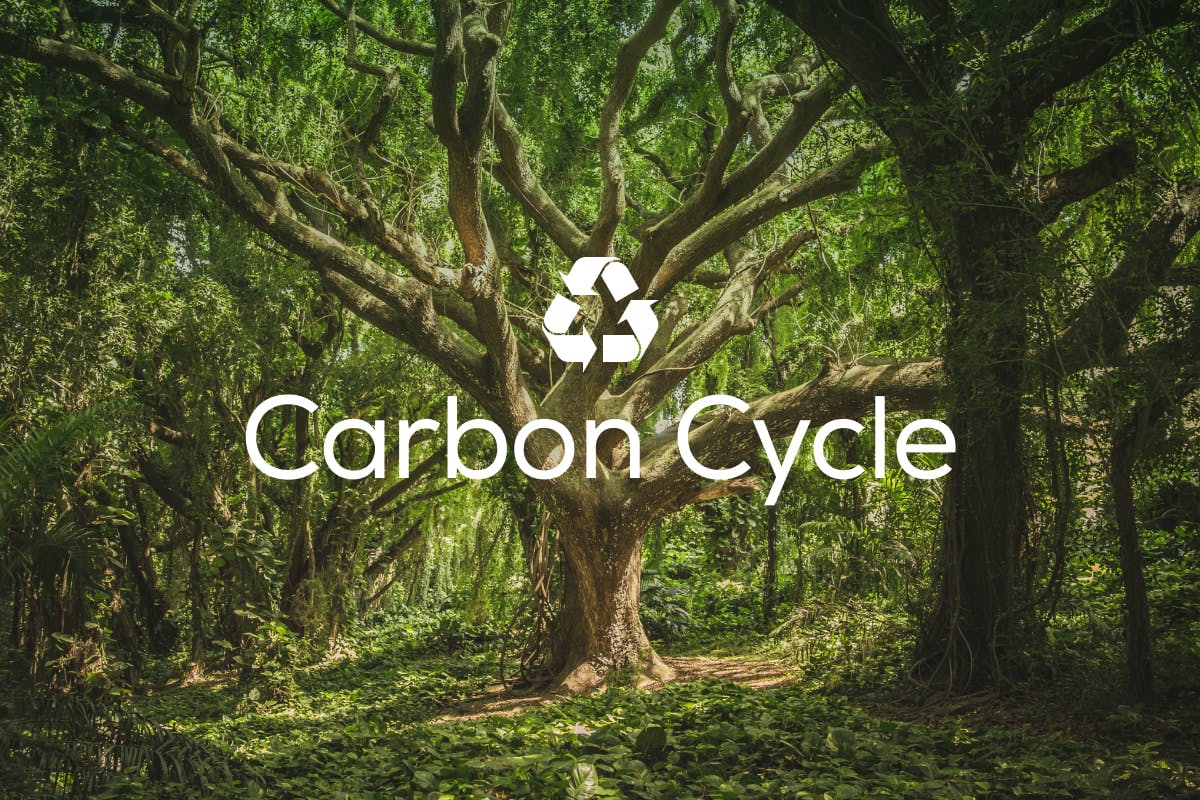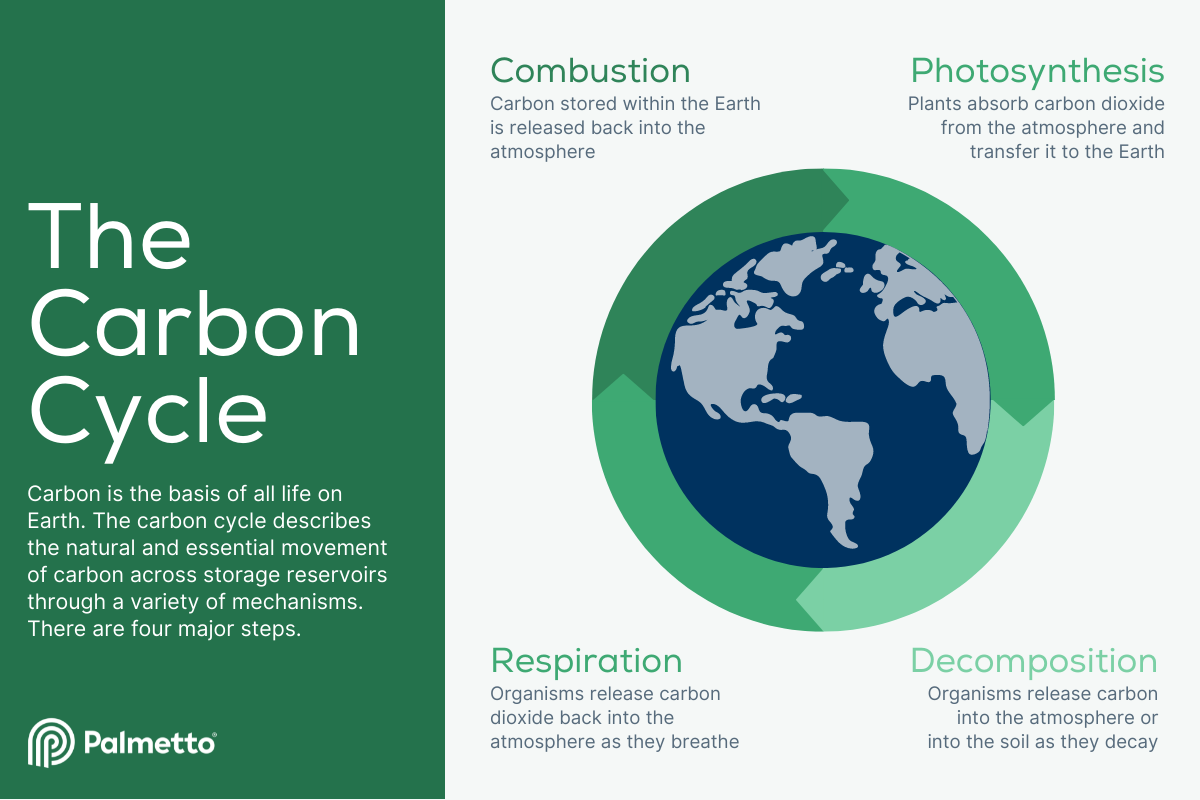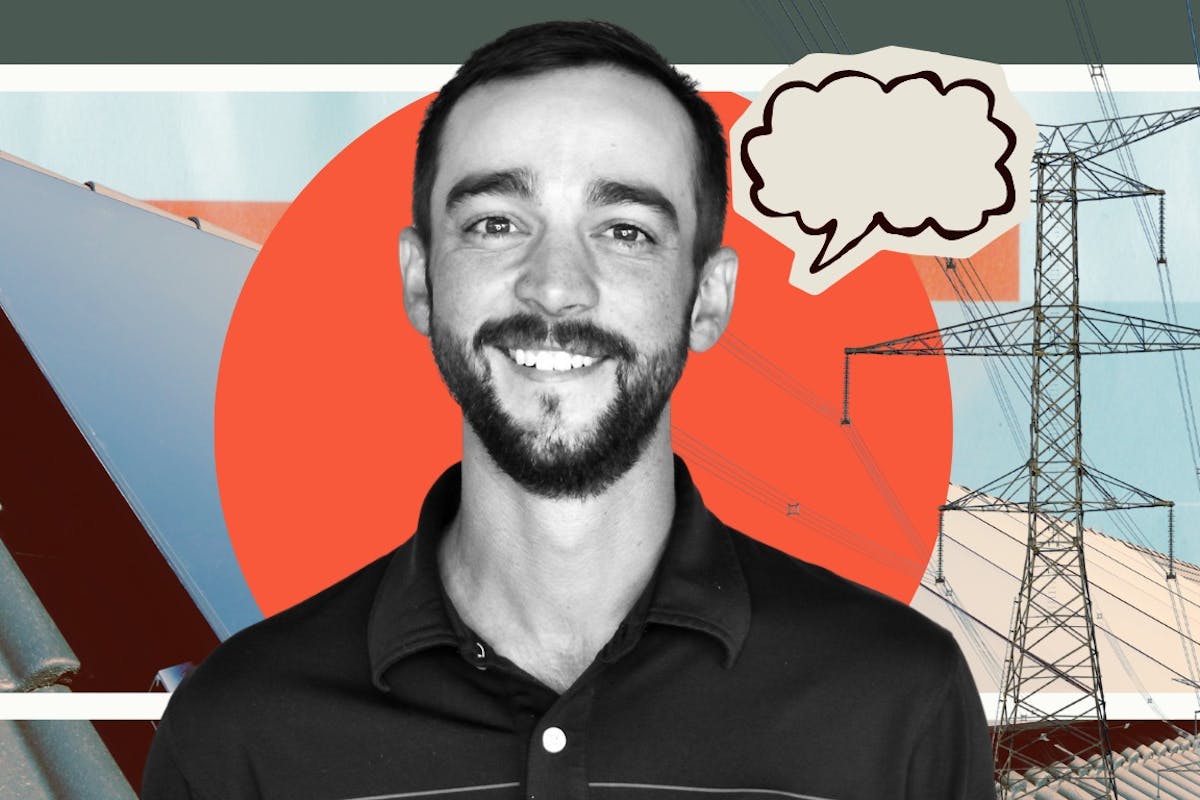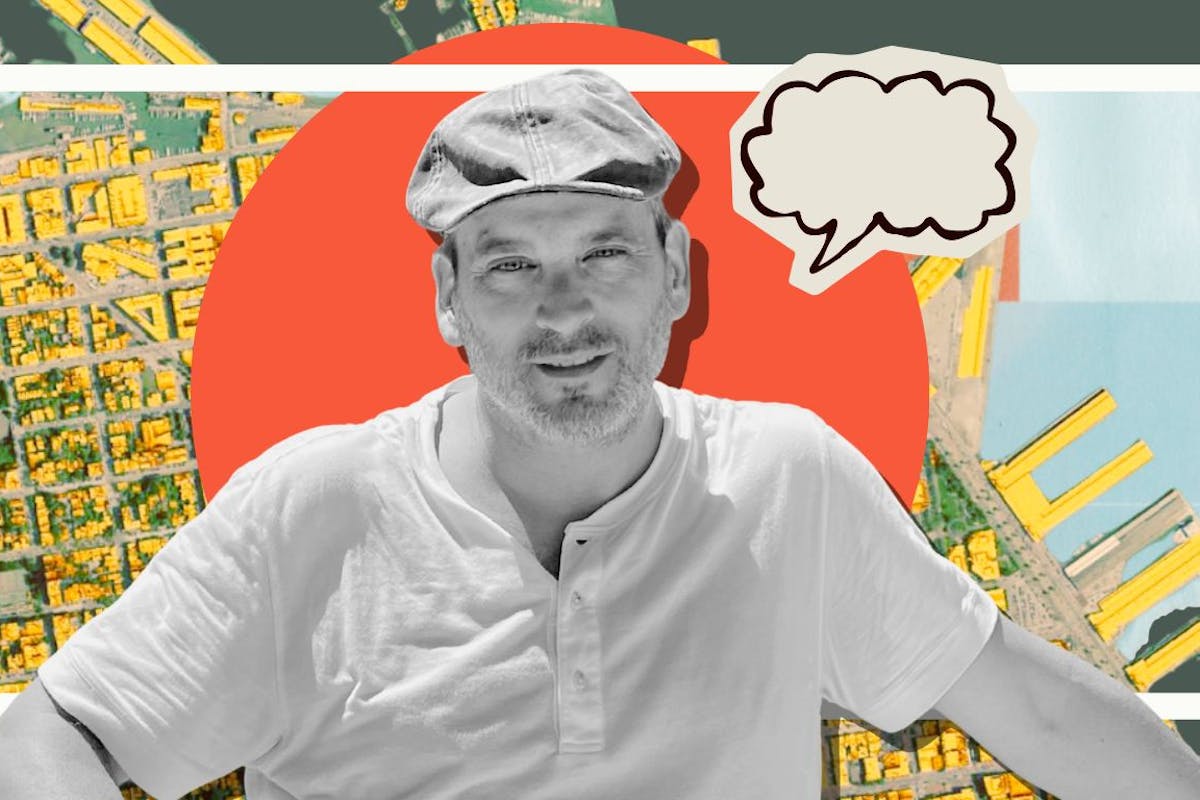How the Carbon Cycle Helps Sustain Life on Earth
Last edited

Author
Andrew Blok
Electrification and Solar Writer and Editor

Editor
Ryan Barnett
SVP, Policy & New Market Development

People, plants, and animals are all largely made of carbon. It’s one of the elements most important to life on earth. For millennia, carbon has traveled in a natural cycle through living creatures, the atmosphere, the ocean, and the ground.
Today, after a few hundred years of digging up and burning carbon-based fuels, that cycle is out of whack. Too many greenhouse gases — again, mostly carbon — are fueling global warming andclimate change. Here’s what the carbon cycle is, how it’s been unbalanced, and how we can work to rebalance it and avoid the worst effects of climate change.
See how much you can save with home energy changes
Carbon Cycle Definition
The carbon cycle is a natural process that moves carbon compounds throughout different deposits, or reservoirs, in the environment. These reservoirs include the atmosphere, living organisms, the ocean, and rocks and sediments. Carbon atoms naturally cycle through reservoirs since all life on Earth uses carbon compounds for basic biological processes.
The carbon cycle occurs because Earth is a closed system, meaning that the total amount of carbon never changes. What does change is how much carbon resides in each of those reservoirs at any one time. While the largest deposits of carbon are stored inside rocks and sediment that exist below Earth's surface, the oceans and the atmosphere also hold carbon. From these sources, plants and animal life can draw on carbon to perform biological processes.
How Does the Carbon Cycle Work?
Carbon can move from one reservoir to another in a variety of ways.
- Photosynthesis: Plants absorb carbon dioxide (CO2) in the atmosphere to produce the sugars they need to live, and this moves carbon from the air into plant matter.
- Decomposition: As deceased plants and animals decay, their carbon is released into the atmosphere or ground.
- Respiration: Carbon is released into the atmosphere as living organisms breathe. Think of how your exhalations contain carbon dioxide.
- Combustion: Whether in volcanic eruptions or fossil fuel-based energy systems (basically turning dead organisms into fuel), burning fossil fuels and other carbon-based sediments releases energy and returns carbon to the atmosphere.
Those steps of the carbon cycle work together to move carbon throughout the environment. Just keep in mind that carbon doesn’t have to move through every step, since the carbon cycle is more of a system than a single process.
- Photosynthesis draws carbon from the air and moves it into plant matter.
- Respiration takes carbon within plant matter and moves it back into the atmosphere.
- As organisms die, they decompose, and their carbon solidifies underground.
- Combustion takes the underground carbon and releases it into the atmosphere, ready to be photosynthesized.
To help explain this process in more detail, we put together this carbon cycle diagram:

Fast carbon cycle
The fast cycle refers to the relatively quick way carbon moves from reservoir to reservoir, typically thanks to biological processes. For example, grass might capture carbon from the atmosphere in its leaves, a cow eats the grass, and later breaths our carbon dioxide or burps up methane back into the atmosphere. Even much of the carbon trapped in its body will be released when the cow dies and decomposes.
Because of the swift nature of biological processes, the compounds are rapidly moved between plant matter, animals, and the atmosphere. Very little carbon is moved during any given spin through the fast cycle, but due to the speed of the process, the overall amount processed each year is greater than in the slow cycle.
Slow carbon cycle
The exchange of carbon compounds between the atmosphere and Earth (where it is stored in the ocean, rocks, and soil) is called the slow carbon cycle, and it can take millions of years. This process mainly involves the decomposition and combustion parts of the carbon cycle steps.
- Natural processes within the Earth, like tectonics and internal chemical reactions, contribute most to slow cycling.
- Carbonic acid within rain introduces compounds into the soil and oceans, where it begins to form into rocks that can store carbon.
- Merging of decaying organic material from the fast cycle as it moves underground over a long time frame is also a factor.
While a single trip moves more carbon than its speedy sibling, the slow cycle is so gradual that it processes less carbon per year than the fast cycle.
See how much you can save with home energy changes
Why The Carbon Cycle Is Important
The most common carbon compound in the carbon cycle is carbon dioxide, a greenhouse gas. Greenhouse gases in the atmosphere trap heat energy that would normally radiate out into space. As more greenhouse gases accumulate in the atmosphere, more energy is trapped.
Having some greenhouse gasses is crucial to keeping our planet at a habitable temperature. Without a warm atmosphere, Earth would be far too cold for life to thrive. However, the accumulation of too many greenhouse gasses can lead to global warming. This causes overall temperatures to rise and extreme weather events to occur.
The natural carbon cycle is stable enough to avoid rapid global warming. Human intervention, however, can disrupt this natural cycle.
Human Impact On The Carbon Cycle
Human actions have led to higher carbon levels in the atmosphere than at any other point in the modern record. Using fossil fuels for energy and fuel is the biggest reason.
While the carbon cycle can remove some of that carbon dioxide, it can only remove so much. The buildup of greenhouse gases leads to global warming and the related extreme weather events and other ecological and environmental crises.
Some examples of ways humans are creating greenhouse gases and overwhelming the carbon cycle include:
- Cutting down forests for development greatly reduces how much photosynthesis occurs, and eliminates a carbon reservoir.
- The agricultural sector uses heavy machinery that releases a large amount of carbon dioxide from the combustion process, while also clearing land in large quantities.
- Gasoline- and diesel-powered cars emit carbon dioxide in their exhaust while being operated.
- International shipping uses huge amounts of fossil fuels to power ships, planes, and trucks.
- Fossil fuel-based home heating systems, energy grids, and appliances are very common.
- The textile and fashion industries produce a huge amount of waste, and the creation of certain fabrics can lead to high amounts of carbon emissions.
Carbon Recycling Helps Sustain Life On Earth
A properly functioning carbon cycle is crucial to maintaining a healthy planet and healthy life for everyone that inhabits it. The Earth must have a way to regularly distribute carbon throughout our environment to preserve the balance between plant, animal, and insect life. However, human activities have altered the cycle, funneling millions of pounds of excess carbon compounds into the atmosphere, especially in the form of carbon dioxide, a greenhouse gas.
The good news is that you can take steps to lower your carbon footprint. By making more environmentally-conscious decisions you can reduce your contribution to growing emissions.
One of the best ways to lower your impact on the carbon cycle is to install solar panels on your home. By using renewable energy instead of fossil fuels, you can help slow global warming, and you could even lower your monthly energy bills in the process. Palmetto can help you take the first steps towards the installation of a solar power system on your home, so check out our Free Solar Design and Savings Estimate tool to get started today!
See what home electrification can do for you:
Frequently Asked Questions
What is the carbon cycle?
The carbon cycle is the natural process by which carbon moves between reservoirs — like the atmosphere, living things, the ocean, and sediment and rock. Combustions, respiration, decomposition, and photosynthesis are major pathways carbon take between reservoirs.
What is a carbon footprint?
A carbon footprint is the amount of carbon released into the atmosphere associated with an activity, a person, a country, an industry, or more.
How do carbon and climate change relate?
The increase of carbon dioxide, methane, and other greenhouse gases in the atmosphere drives climate change. Because an atmosphere with a higher concentration of these mostly carbon-based gases traps more heat, the planet is warming up.


